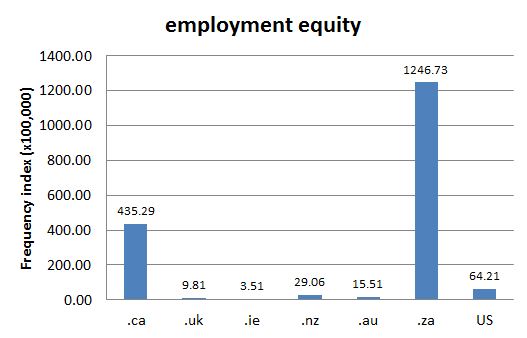DCHP-2
employment equity DCHP-2 (October 2016)
n. — Administration
a principle supporting equal treatment in employment (hiring, wages, benefits, personal support) for disadvantaged groups (visible minorities, people with disabilities, women)
Type: 5. Frequency — The term employment equity was used in Canada by the 1984 Abella Commission, in contrast to the term affirmative action used to refer to similar principles and policies in the US (see the 1984 quotation). The term employment equity is also attested in the US from at least 1982 onwards. Internationally, the term is most frequently used in South Africa, likely due to efforts to redress inequalities dating from the Apartheid period (see Chart 1).
See also COD-2, which marks it "Cdn & S Africa".
